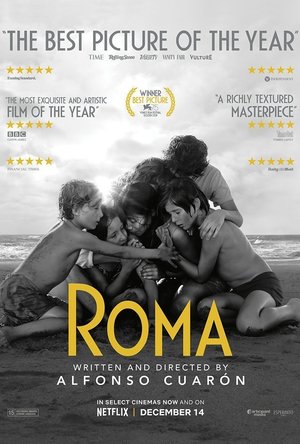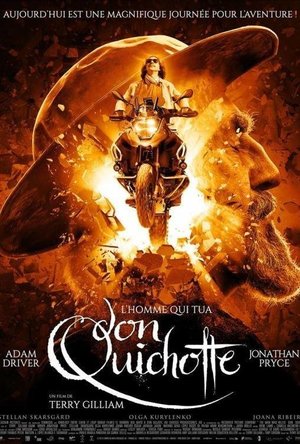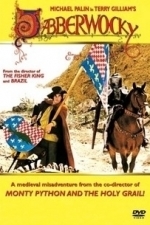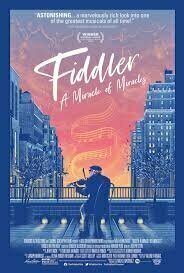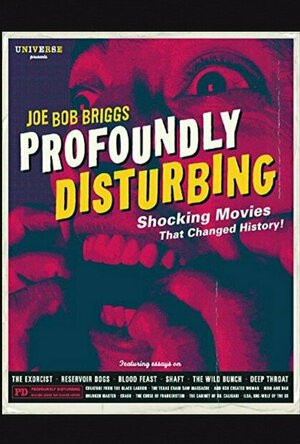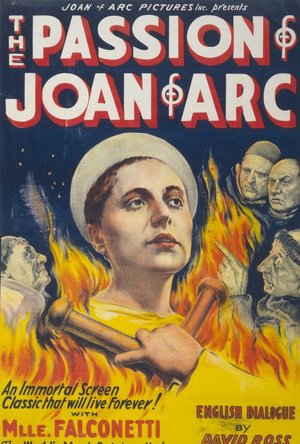Search
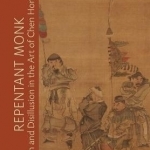
Repentant Monk: Illusion and Disillusion in the Art of Chen Hongshou
Book
Repentant Monk: Illusion and Disillusion in the Art of Chen Hongshou is the first U.S. exhibition...
BankofMarquis (1832 KP) rated Roma (2018) in Movies
Jan 16, 2019
A lush and beautiful memory
Alfonso Cuaron - the magnificent Director from Mexico who directed such big Hollywood hits as HARRY POTTER AND THE PRISONER OF AZKABAN (the best HP flick, IMHO) and GRAVITY (one of the best films of 2013, IMHO) has made a little "personal" film that was financed and released by Netflix. Netflix, in their wisdom, realized they might have an Oscar contender on it's hands, so has released ROMA in limited release to Theaters (mostly Art Houses) and...in some instances...you can catch a 70mm print of this film. Or...you can watch it on your TV via your Netflix subscription.
I would highly recommend checking this film out at your local movie theater house and, if you are lucky enough to have a theater that is showing the 70mm print, I would tell you to run...don't walk...to check this out.
For ROMA is a beautifully filmed Black and White film, in Spanish (with English subtitles) that tells a very personal story of a family in Mexico City in the early 1970's - as seen through the eyes of their house maid. This story is based (according to what I have read) on Cuaron's own childhood and he has lovingly, beautifully recreated this world and populated it with some interesting characters/experiences.
It is also languidly paced (read: slow) and - if I am honest about it - not much happens. So if you add languid pace with black and white photography with Spanish language (and English subtitles) with not much in the way of plot or action, your attention span will be stretched and, I'm afraid, if you're home, you will be tempted to be distracted by your phone, the dog, the dishes, a magazine, etc...
And that would be a shame, for I fell in love with this film, the beauty of the cinematography and the slow pace of it all and I think you will too if you give it a chance.
Cuaron, most certainly, will be nominated for an Oscar for his writing and directing of this piece - and I am sure that this film will be nominated for Best Picture (and deservedly so), but it is in two other places that I was entranced by ROMA. I have mentioned the first - the Cinematography. This film is a shoo-in for a Best Cinematography Oscar, the black and white is lush and rich throughout the film and adds to the memory-style idealized world that Cuaron has put on screen. So, the Best Cinematography Oscar should go to...Alfonso Cuaron.
The other area that I am surprised to say worked very well for me is the performances of the cast, all Mexican actors, unknown to U.S. audiences. Standing out most notably are Marina de Tavira as the matriarch of the family, Senora Sofia and, most surprisingly, Yalitza Aparicio as the focal point of this film, Cleo. Her part is mostly mute (or at least mute for me, for I don't speak Spanish) so the emotions I felt coming from her were brought forth through her facial features, looks and reactions, much more than what she says. I would be fine with either of these two getting an Oscar nomination.
Despite a slow start - and a slow pace throughout this film - and not much going on, I was entranced and enthralled by the world that Cuaron put on screen. A world that exists, mostly, in Cuaron's memory and that, now, exists for us to see in this wonderful film.
Letter Grade: A
9 (out of 10) stars and you can take that to the Bank(ofMarquis)
I would highly recommend checking this film out at your local movie theater house and, if you are lucky enough to have a theater that is showing the 70mm print, I would tell you to run...don't walk...to check this out.
For ROMA is a beautifully filmed Black and White film, in Spanish (with English subtitles) that tells a very personal story of a family in Mexico City in the early 1970's - as seen through the eyes of their house maid. This story is based (according to what I have read) on Cuaron's own childhood and he has lovingly, beautifully recreated this world and populated it with some interesting characters/experiences.
It is also languidly paced (read: slow) and - if I am honest about it - not much happens. So if you add languid pace with black and white photography with Spanish language (and English subtitles) with not much in the way of plot or action, your attention span will be stretched and, I'm afraid, if you're home, you will be tempted to be distracted by your phone, the dog, the dishes, a magazine, etc...
And that would be a shame, for I fell in love with this film, the beauty of the cinematography and the slow pace of it all and I think you will too if you give it a chance.
Cuaron, most certainly, will be nominated for an Oscar for his writing and directing of this piece - and I am sure that this film will be nominated for Best Picture (and deservedly so), but it is in two other places that I was entranced by ROMA. I have mentioned the first - the Cinematography. This film is a shoo-in for a Best Cinematography Oscar, the black and white is lush and rich throughout the film and adds to the memory-style idealized world that Cuaron has put on screen. So, the Best Cinematography Oscar should go to...Alfonso Cuaron.
The other area that I am surprised to say worked very well for me is the performances of the cast, all Mexican actors, unknown to U.S. audiences. Standing out most notably are Marina de Tavira as the matriarch of the family, Senora Sofia and, most surprisingly, Yalitza Aparicio as the focal point of this film, Cleo. Her part is mostly mute (or at least mute for me, for I don't speak Spanish) so the emotions I felt coming from her were brought forth through her facial features, looks and reactions, much more than what she says. I would be fine with either of these two getting an Oscar nomination.
Despite a slow start - and a slow pace throughout this film - and not much going on, I was entranced and enthralled by the world that Cuaron put on screen. A world that exists, mostly, in Cuaron's memory and that, now, exists for us to see in this wonderful film.
Letter Grade: A
9 (out of 10) stars and you can take that to the Bank(ofMarquis)
Andy K (10823 KP) rated The Man Who Killed Don Quixote (2018) in Movies
Jul 1, 2019
25+ years in the making!
Up until its release, "The Man Who Killed Don Quixote" would have been at the top of any movie list featuring movies in development hell never to actually make it to the big screen. Those who are interested should read the lengthy details of the various derailed productions of the film including its original incarnation starring Johnny Depp and the late Jean Rochefort. The film chronicles can even be viewed on their own in the 2002 documentary film "Lost in La Mancha".
To say director Terry Gilliam has had a hard time getting some of his quirky films made, financed and released is an understatement for sure. Films like "Brazil", "The Adventures of Baron Munchausen" or "Tideland" had their difficulties making it to the big screen. How about having the main star of your film die in the middle of production? He had that issue as well during filming of "The Imaginarium of Doctor Parnassus" when Heath Ledger passed away. Thanks to the help of Johnny Depp, Collin Farrell and Jude Law stepping in, the film was able to be released eventually.
Over the years I had kept up with Gilliam's repeated attempts to get the film financed and made including another time where he had cast fellow Python vet Michael Palin in the lead or even Robert Duvall was attached at one point.
The movie itself is a marvel of tenacity for Gilliam and I am very glad he was finally able to make it.
This final version of the film stars Adam Driver as troubled film director, Toby, and Jonathan Pryce as Don Quixote.
Toby is not thrilled about his current production and wanders back to the small Spanish town where he had met some of the locals and made a student film about Quixote 10 years earlier. He finds his "Quixote" living out a sideshow fantasy having lost his grip on reality thinking he is still Quixote today. Toby decides to launch an adventure with him through the Spanish countryside as his "Sancho Panza". Through their quests they encounter a multitude of interesting, wacky and outlandish characters who feed into the Quixote fantasy.
I have to say the film's look left me breathless. As with Gilliam's entire library of films, the production design, art direction and cinematography were astonishing really delving you into this larger than life world and helped move along some of the weaker elements.
Gilliam's goal with the screenplay was to adapt the classic Quixote story to be told under up to date circumstances and I'm not sure he completely succeeded. Some of the scenes and dialogue were boring and the movie's plot dragged at times. The mixing of world's was a little confusing and not sure the payoff entirely wrapped the story to conclusion.
Besides playing Kylo Wren, I am not sure Adam Driver will end up having a long career in film as I thought he was flat and not entertaining to watch as I am sure Depp would have been in the role. Jonathan Pryce was a joy to watch and every scene he was in he really stole the show.
It was fun to watch some elements from some of Gilliam's other work on display including the red knight from "The Fisher King", the sprawling landscapes from "Baron Munchausen" or "Time Bandits" and even the sideshow from "Parnassus".
Overall, I am glad I finally got to watch it as I am sure Gilliam was to finally film and release his long-awaited project. I guess I would say I was entertained, but felt like it fell short of being a true classic.
To say director Terry Gilliam has had a hard time getting some of his quirky films made, financed and released is an understatement for sure. Films like "Brazil", "The Adventures of Baron Munchausen" or "Tideland" had their difficulties making it to the big screen. How about having the main star of your film die in the middle of production? He had that issue as well during filming of "The Imaginarium of Doctor Parnassus" when Heath Ledger passed away. Thanks to the help of Johnny Depp, Collin Farrell and Jude Law stepping in, the film was able to be released eventually.
Over the years I had kept up with Gilliam's repeated attempts to get the film financed and made including another time where he had cast fellow Python vet Michael Palin in the lead or even Robert Duvall was attached at one point.
The movie itself is a marvel of tenacity for Gilliam and I am very glad he was finally able to make it.
This final version of the film stars Adam Driver as troubled film director, Toby, and Jonathan Pryce as Don Quixote.
Toby is not thrilled about his current production and wanders back to the small Spanish town where he had met some of the locals and made a student film about Quixote 10 years earlier. He finds his "Quixote" living out a sideshow fantasy having lost his grip on reality thinking he is still Quixote today. Toby decides to launch an adventure with him through the Spanish countryside as his "Sancho Panza". Through their quests they encounter a multitude of interesting, wacky and outlandish characters who feed into the Quixote fantasy.
I have to say the film's look left me breathless. As with Gilliam's entire library of films, the production design, art direction and cinematography were astonishing really delving you into this larger than life world and helped move along some of the weaker elements.
Gilliam's goal with the screenplay was to adapt the classic Quixote story to be told under up to date circumstances and I'm not sure he completely succeeded. Some of the scenes and dialogue were boring and the movie's plot dragged at times. The mixing of world's was a little confusing and not sure the payoff entirely wrapped the story to conclusion.
Besides playing Kylo Wren, I am not sure Adam Driver will end up having a long career in film as I thought he was flat and not entertaining to watch as I am sure Depp would have been in the role. Jonathan Pryce was a joy to watch and every scene he was in he really stole the show.
It was fun to watch some elements from some of Gilliam's other work on display including the red knight from "The Fisher King", the sprawling landscapes from "Baron Munchausen" or "Time Bandits" and even the sideshow from "Parnassus".
Overall, I am glad I finally got to watch it as I am sure Gilliam was to finally film and release his long-awaited project. I guess I would say I was entertained, but felt like it fell short of being a true classic.
Awix (3310 KP) rated Jabberwocky (1977) in Movies
Feb 10, 2018 (Updated Feb 10, 2018)
Little bit Slithy, little bit Frabjous
Oddball comedy-drama that sets the tone for much of Terry Gilliam's career by being visually ravishing but a bit all-over-the-place story-wise. Gilliam's background at the time was in TV comedy, which may explain why so many well-known TV comics turn up in the film - apart from Michael Palin, there's Warren Clarke, Harry H Corbett, John le Mesurier, and so on.
The thing is that this isn't actually very funny - there are the seeds of some good jokes here, but the fact the movie has been filmed and edited in the style of an art-house historical drama kills most of them dead. Still, the medieval period has seldom been brought to the screen with such an authentic sense of filth, squalour, and misery, and the monster suit is pretty good. That said, if you're not into absurd comedy, Dragonslayer (1981) tells a very similar story in a more accessible style.
(And I have to say I'm astounded a film so focused on gore and bodily functions has only got a PG certificate. Caveat emptor.)
The thing is that this isn't actually very funny - there are the seeds of some good jokes here, but the fact the movie has been filmed and edited in the style of an art-house historical drama kills most of them dead. Still, the medieval period has seldom been brought to the screen with such an authentic sense of filth, squalour, and misery, and the monster suit is pretty good. That said, if you're not into absurd comedy, Dragonslayer (1981) tells a very similar story in a more accessible style.
(And I have to say I'm astounded a film so focused on gore and bodily functions has only got a PG certificate. Caveat emptor.)
Awix (3310 KP) rated Fiddler: A Miracle of Miracles (2019) in Movies
Dec 13, 2019
Somewhat digressive documentary comes to celebrate Fiddler on the Roof, not critique it, as the title probably makes clear. Various interviewees recount the creation of the show, while others reflect on its cultural impact and continuing and enormous popularity (apparently there has been at least one performance somewhere in the world every single day since it first opened in 1964).
The stories and insights are interesting enough to keep you from wishing you'd just watched a DVD of the movie instead, and they have hunted up some fascinating footage to illustrate the film, ranging from the Temptations doing a very funky version of 'If I Were A Rich Man' to Lin-Manuel Miranda's wedding video. The film addresses the central paradox about this show - that something so very specific in time, place and outlook has such universal appeal and emotional power - but doesn't really attempt to explain it. This is probably quite wise, as it is one of the mysteries of great art. Worth a look if you like the show, which everyone with a heart and a soul who's actually seen it surely does.
The stories and insights are interesting enough to keep you from wishing you'd just watched a DVD of the movie instead, and they have hunted up some fascinating footage to illustrate the film, ranging from the Temptations doing a very funky version of 'If I Were A Rich Man' to Lin-Manuel Miranda's wedding video. The film addresses the central paradox about this show - that something so very specific in time, place and outlook has such universal appeal and emotional power - but doesn't really attempt to explain it. This is probably quite wise, as it is one of the mysteries of great art. Worth a look if you like the show, which everyone with a heart and a soul who's actually seen it surely does.
CE
Close Encounters of the Third Kind: The Ultimate Visual History
Book
Celebrate the fortieth anniversary of Steven Spielberg's sci-fi classic Close Encounters of the...
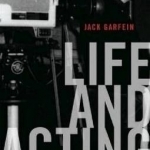
Life and Acting: Techniques for the Actor
Book
Arriving in America as a teenage Holocaust refugee, Jack Garfein would soon rise to the top of his...
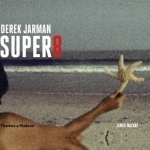
Derek Jarman Super 8
Book
One of the most influential filmmakers of the late 20th century, Derek Jarman directed cult feature...
Darren Fisher (2465 KP) rated Profoundly Disturbing: Shocking Movies That Changed History! in Books
Dec 21, 2020
Profoundly Interesting
Joe Bob Brigg certainly knows his stuff. He delivers an intelligent and fascinating view on the films covered here. Especially interesting was the chapter concerning Kroger Babb, a name I wasn't familiar with until now. Joe covers the films Cabinet of Dr Caligari (1919), Mom And Dad (1947), Creature Front The Black Lagoon (1954), And God Created Woman (1956), Curse of Frankenstein (1957), Blood Feast (1963), The Wild Bunch (1969), Shaft (1971), Deep Throat (1972), The Exorcist (1973), Isla, She-Wolf of the SS (1974), Texas Chainsaw Massacre (1974), Drunken Master (1978), Reservoir Dogs (1992) and Crash (1996). Although it is a very good read my only gripes are that the essays on some films are way too short and the summary pages after each chapter "For Further Disturbance" are basically an edited rehash of the previous pages. Also no matter how I try to look at it, Shaft (as good a film as it is) really doesn't fall under the 'profoundly disturbing' category. Nevertheless it's a good read and has some nice double page poster art for each film. A nice book to have but nonetheless not that essential
RəX Regent (349 KP) rated The Passion of Joan of Arc (1928) in Movies
Feb 19, 2019
Silent cinema is not my strongest subject but one which I have been making a concerted effort to learn about over the past decade, but admittedly at a slow pace. The idea of sitting through a silent film can seem to be chore to a modern audience and to be honest, it can be inconceivable to the vast majority, but these attitudes only serve to deprive us of 30 years of cinema, both in primitive evolution and cinematic excellence.
The notion is that silent movies where almost amateurish is style, a three decade long film school to keep up occupied until the Talkies turned up and “film” as we know it, was born. This is wrong. Film is visual medium, Movies, moving pictures, all of which were accompanied by music by the way, so the term “silent” only really refers to the lack of synchronized sound and dialogue.
ydvjeYet, the core of film is visual. Modern cinema is a about perfecting the mesh of media forms, music, photography, narrative and sound. But without dialogue, silent movies had a challenge on their hands and one which The Passion Of Joan Of Arc, one of the last silent movies of the era, rose to perfectly.
Visually, this could have been made yesterday. A truly timeless blend of artistic and innovative cinematography, fast paced editing and outstanding performances. The Danish director, Carl Theodore Dreyer mastered the close up, naturalistic acting and manages to tell the procedural story of the trial of Joan Of Arc in such a gripping manner that you will forget that there is no spoken dialogue, yet you are literally putting the intertitles in to the mouths of the cast.
Not a single cast member is wasted, with every one pouring their hearts and souls in to the camera in such nuanced ways that it can be left to debate and interpretation as to exactly who is thinking or feeling what as Joan, Maria Falconetti in her third and final film role, steals the screen with her tortured soul and face shown almost entirely in close up.
the-passion-of-joan-of-arc-large-pictureOver acting has given way to strong acting, each shot designed to allow us access to her soul as she, in a plot not to dissimilar from the last hours of Jesus Christ, is torn between torture and certain death of abandoning her faith and spending the rest of her life imprisoned with only bread and water to look forward too.
The script is based on the actually accounts of the future saint’s trial in 1431 but the real events took place over 18 months whilst this either compresses this into one day or takes place on the last one, but the feeling is that this is the one and only trial of Joan so in that sense, theatrical licence has been taken but it hardly matters. The facts are present and the story is harrowing, made more so by an almost perfect production, led by a controversial, almost Kubrickian director, forcing his cast to suffer for their art, yet this version of events is also contested.
joan-of-arc-soundtrackFor everyone out there who believes that Silent movies are just cut to the chase comedies, or overly flamboyant and patronising filler until “real films” are made, this may just serve as wake up call, that films have evolved, but Sound would actually set the industry back in the 1930’s, as the new audio based art form evolved just as movies had up until this point., but Joan Of Arc should help all see that film has always been able to convey anything, from humour to horror; Real of make-believe.
Many believe that this movie is one of the best ever made and I do believe that to be true. An outstanding and forgotten film to all but critics and film buffs, one which everyone should see.
VERSION
The version which I watched was The Criterion Edition of the 1985 restoration of Dreyer’s “Lost” original cut. The music to this film was never deemed to be that important so there are several compositions which have been attached to the film over the years.
The “Lo Duca” cut, which was the a 61 minute version (1951) doing the rounds for years after the original cut was lost in a fire soon after the film’s release, was cut together by Joseph-Marie Lo Duca after discovering a negative in a vault. This version, as well as the “Director’s Cut” are both available on the Blu-ray, whilst it appeared that the 1985 restoration (Director’s Cut) is more widely available on DVD.
The notion is that silent movies where almost amateurish is style, a three decade long film school to keep up occupied until the Talkies turned up and “film” as we know it, was born. This is wrong. Film is visual medium, Movies, moving pictures, all of which were accompanied by music by the way, so the term “silent” only really refers to the lack of synchronized sound and dialogue.
ydvjeYet, the core of film is visual. Modern cinema is a about perfecting the mesh of media forms, music, photography, narrative and sound. But without dialogue, silent movies had a challenge on their hands and one which The Passion Of Joan Of Arc, one of the last silent movies of the era, rose to perfectly.
Visually, this could have been made yesterday. A truly timeless blend of artistic and innovative cinematography, fast paced editing and outstanding performances. The Danish director, Carl Theodore Dreyer mastered the close up, naturalistic acting and manages to tell the procedural story of the trial of Joan Of Arc in such a gripping manner that you will forget that there is no spoken dialogue, yet you are literally putting the intertitles in to the mouths of the cast.
Not a single cast member is wasted, with every one pouring their hearts and souls in to the camera in such nuanced ways that it can be left to debate and interpretation as to exactly who is thinking or feeling what as Joan, Maria Falconetti in her third and final film role, steals the screen with her tortured soul and face shown almost entirely in close up.
the-passion-of-joan-of-arc-large-pictureOver acting has given way to strong acting, each shot designed to allow us access to her soul as she, in a plot not to dissimilar from the last hours of Jesus Christ, is torn between torture and certain death of abandoning her faith and spending the rest of her life imprisoned with only bread and water to look forward too.
The script is based on the actually accounts of the future saint’s trial in 1431 but the real events took place over 18 months whilst this either compresses this into one day or takes place on the last one, but the feeling is that this is the one and only trial of Joan so in that sense, theatrical licence has been taken but it hardly matters. The facts are present and the story is harrowing, made more so by an almost perfect production, led by a controversial, almost Kubrickian director, forcing his cast to suffer for their art, yet this version of events is also contested.
joan-of-arc-soundtrackFor everyone out there who believes that Silent movies are just cut to the chase comedies, or overly flamboyant and patronising filler until “real films” are made, this may just serve as wake up call, that films have evolved, but Sound would actually set the industry back in the 1930’s, as the new audio based art form evolved just as movies had up until this point., but Joan Of Arc should help all see that film has always been able to convey anything, from humour to horror; Real of make-believe.
Many believe that this movie is one of the best ever made and I do believe that to be true. An outstanding and forgotten film to all but critics and film buffs, one which everyone should see.
VERSION
The version which I watched was The Criterion Edition of the 1985 restoration of Dreyer’s “Lost” original cut. The music to this film was never deemed to be that important so there are several compositions which have been attached to the film over the years.
The “Lo Duca” cut, which was the a 61 minute version (1951) doing the rounds for years after the original cut was lost in a fire soon after the film’s release, was cut together by Joseph-Marie Lo Duca after discovering a negative in a vault. This version, as well as the “Director’s Cut” are both available on the Blu-ray, whilst it appeared that the 1985 restoration (Director’s Cut) is more widely available on DVD.
